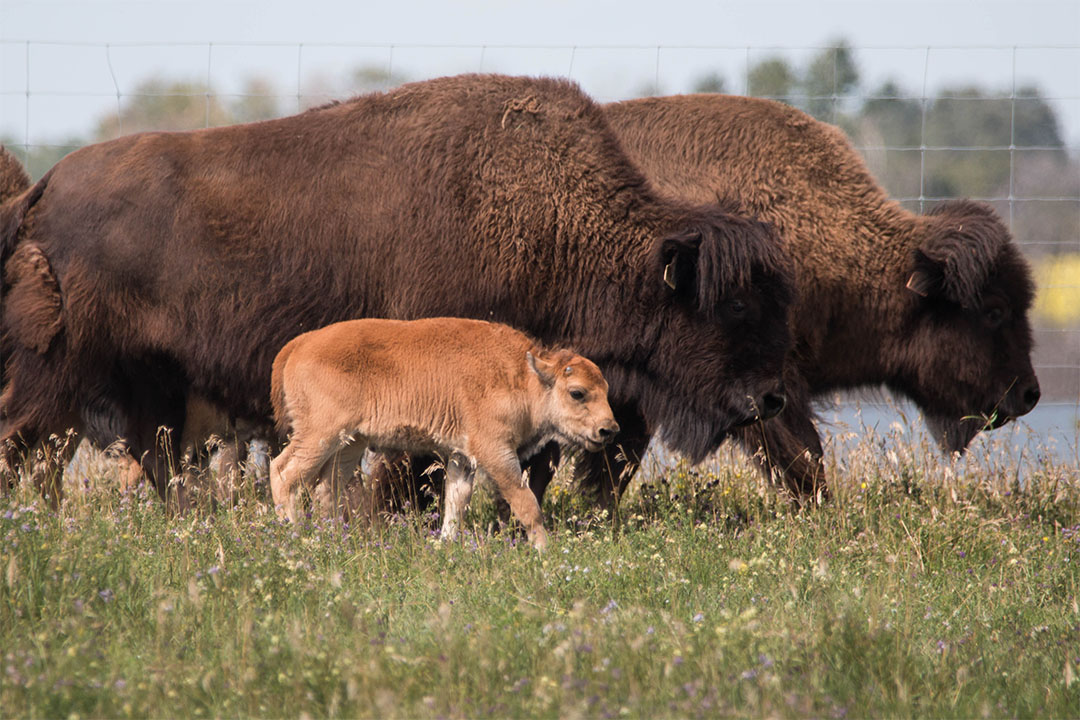
Scientists strive to revive Canada’s wood bison herds
Straddling the boundary between northern Alberta and the southernmost tip of the Northwest Territories lies Wood Buffalo National Park, the widest-reaching patch of federally-protected wilderness in all of Canada.
By HenryTye GlazebrookAnd scattered throughout these confines, grazing beyond the cluttered populations of modern society just as they may have in the long-since-passed days of endless prairie fields and unfettered wilderness, exists the world’s largest population of wood bison.
But, for the safety of their own numbers, the animals and people they might come into contact with and the overall welfare of Canada’s agricultural industry, these massive creatures are never permitted to leave the park.
“When I say locked, it’s like ‘Checkpoint Charlie’—they can’t get out, and if they do, they’re shot,” says Dr. Gregg Adams, a professor of veterinary medical sciences at the University of Saskatchewan’s Western College of Veterinary Medicine (WCVM).
These bison are kept under firm lock and key due to their status as potential carriers of tuberculosis and brucellosis, two highly contagious diseases that were likely introduced to the animals when they first made contact with domesticated beef cattle nearly 100 years ago.
Adams is the principal investigator for the Wood Bison Reproduction Team, which operates primarily out of the U of S Native Hoofstock Centre, is aimed at helping these animals lead fuller, healthier lives.
Working with collaborators from across Canada — including veterinarians from the Northwest Territories and the University of Calgary as well as researchers with Agriculture and Agri-Food Canada and both the Toronto and Calgary Zoos — the group is hoping to introduce a fresh spark of genetic diversity into the greater bison population by investigating, understanding and manipulating their reproductive process.
“The main goal that we set out to do is to solve this longstanding stalemate that we have regarding the conservation of bison,” Adams says.
“Wood bison are indigenous to Canada, and they have been threatened for a long time. The population is stalemated at less than five per cent of historic levels, and we really felt that with this team we could make a difference and solve this problem.”
The group began by characterizing normal bison reproductive patterns, a foundational task that has burst the door open to more advanced work.
Since then they have successfully retrieved eggs, semen and embryos from live animals and frozen these materials for later use at local and remote locations. They have even achieved the world’s first successful bison births from fixed-time artificial, in vivo and in vitro insemination, as well as from the use of frozen embryos.
The team’s work may eventually lead to the introduction of robust, disease-free bison birthed through these methods into areas like Wood Buffalo National Park. In time, their offspring can create strong herds free of the diseases that have run rampant through their population.
If successful, this process has the potential to remove massive threats to not only public health —tuberculosis and brucellosis are zoonotic diseases and can be transmitted between animals and humans alike — but also to Canada’s livestock industry.
“Brucellosis and tuberculosis are both diseases that can severely affect the movement of cattle and beef, says Dr. Rob McCorkell, a professor with the University of Calgary Faculty of Veterinary Medicine. “If these diseases manage to get into our livestock [herds], it can result in the closure of borders to our products and the very expensive consequences of that and the subsequent follow up work to eliminate the disease.”
McCorkell, who has been working with the Wood Bison Reproduction Team since its inception in 2006, emphasized the particular importance of these public health concerns to a province such as Alberta. It’s home to a large portion of the country’s bison, it draws significant industry from cattle production, and it has purposefully shaped its image into that of Canada’s de facto supplier of quality beef.
“An important responsibility for the province is the management of its wildlife, and wood bison represent a very important species in the ecosystem,” says McCorkell. “All Albertans benefit from a sustainable and healthy environment. The cattle industry is iconic with the province, so anything that might threaten it is of serious concern. Removing one of the last reservoirs of brucella and tuberculosis would help to protect that industry.”
These goals, though noble, are still far in the future. The next stage includes a journey to Wood Buffalo National Park for Adams, where he will personally oversee the collection of a small band of these great beasts. He will collect samples of eggs and sperm from their reproductive systems and later use these gametes to birth — through surrogacy — disease-free calves.
And, if luck holds out, perhaps these newborns will take the first, cautious steps toward bringing an entire species back from the brink.
“The point that I have to remember — that we all have to remember — is that this is meant to conserve a threatened species,” Adams says, describing bison as part of Canada’s identity, comparable to the loon, beaver or moose in their ability to conjure the nation’s wild, frontier roots.
“Wood bison — bison in general — have been a keystone species, particularly in the prairies and into the northern boreal forest. The loss of them has been absolutely devastating. It’s a testament to the resilience of bison in general that they are still struggling and fighting to survive.
“All we’ve done so far is develop the tools, and now we have to apply them.”
HenryTye Glazebrook is a freelance writer based in Vancouver, B.C.
